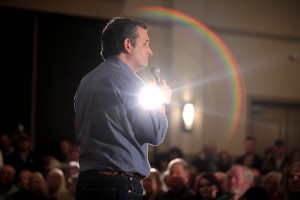
One Robert Davis recently published, at The Hill, a blog headlined “Cruz: Prince of Darkness.”
It is clear both from the headline and the content that Mr. Davis, a retired defense analyst, does not admire Sen. Cruz. That said, he does some awkward swimming outside his lane. Mr. Davis’s credentials — a retired defense analyst — as an economic commentator are not obvious. There is much to dispute in his blog.
There is one paragraph indisputably based on demonstrably faulty premises:
Cruz says he would reintroduce the gold standard, which John Maynard Keynes, a father of modern economics, called a “barbaric relic.” Most contemporary economists agree. U.S. stubborn adherence to the gold standard under Hoover contributed to the Great Depression, according to Keynes and Milton Friedman, once a conservative hero. The classical gold standard exacerbated capital markets’ volatility, sometimes amplifying business cycles’ highs and lows and triggering crashes. It left the U.S. with little ability to shape monetary policy.
Yes, both Keynes and Friedman were staunch foes of the gold standard. And most contemporary economists, who hardly have distinguished themselves in practice, do agree. (Most astronomers, prior to Copernicus, agreed that the Sun went around the Earth. Consensus does not necessarily equal accuracy.)
That said, the classical gold standard, which broke down at the beginning of World War I, had long been gone by 1929 and, thus, could not possibly have “contributed,” over a decade later, to the Great Depression. The true gold standard had been replaced by something called the “gold-exchange” standard which bore only the most superficial resemblance to the classical gold standard.
The gold-exchange standard treated the dollar (and the pound sterling) as equivalent to gold. It thereby jammed the international balance-of-payments settlement mechanisms and indeed was a contributing factor, and quite possibly the proximate cause, of the Great Depression. It was, as called by eminent French economist Jacques Rueff, a “grotesque caricature” of the true gold standard. FDR was right to revalue the dollar from $20.67 to $35 an ounce. That was not the same, notwithstanding some informal declarations to that effect, of “going off” the gold standard.
That the classical gold standard’s “evil twin” precipitated the Great Depression says nothing about the classical gold standard which thereafter was framed for a crime it in no way committed. Moreover, Mr. Davis’s claim that, “The classical gold standard exacerbated capital markets’ volatility, sometimes amplifying business cycles’ highs and lows and triggering crashes” is, at best, utterly misleading and at worst flat wrong.
No proponent of the gold standard claims that it was flawless. But as compared to what? The claim is that the classical gold standard is the least imperfect monetary system that ever has been tried from time to time.
The “Federal Reserve Note” standard visited upon America — and the world — by President Lyndon Johnson, who ruined the post-WWII Bretton Woods system, and by President Richard Nixon, who ended rather than mended it, has an abysmal track record. As I noted last year in a blog, also at The Hill, and which bears repeating, Paul Volcker (not himself a gold standard supporter) pointed out in a speech to the Bretton Woods Committee in 2014:
By now I think we can agree that the absence of an official, rules-based cooperatively managed, monetary system has not been a great success. In fact, international financial crises seem at least as frequent and more destructive in impeding economic stability and growth. The United States, in particular, had in the 1970’s an unhappy decade of inflation ending in stagflation. … Less than a decade later, it was capped by the financial crisis of the 2007-2009 period and the great Recession. Not a pretty picture.
“Not a pretty picture.”
So much for the much vaunted “ability to shape monetary policy” of our current monetary system.
Abundant empirical evidence shows that the classical gold standard correlated very well with long eras of equitable prosperity wherever it has been properly employed, including for most of 200 years in America. America’s economy seriously began to enter the doldrums when we departed from the last remnants of the gold standard in 1971.
Median family incomes flat-lined, never consistently recovering. Restoring the gold standard is a very sound proposal to restore a climate of equitable prosperity, robust job creation and upward income mobility for workers.
Whatever the dubious merit, or lack of merit, of Mr. Davis’s other points, Sen. Cruz surely is to be commended rather than condemned for proposing to restore the gold standard. While it would be something of an exaggeration to call Cruz an “Angel of Light,” it is a preposterous injustice to call him the “Prince of Darkness.” (That epithet more properly belongs to the late, great, journalist Robert Novak, another gold standard sympathizer.)
Ralph Benko, internationally published weekly columnist, co-author of The 21st Century Gold Standard, lead co-editor of the Gerald Malsbary translation from Latin to English of Copernicus’s Essay on Money, is American Principles Project’s Senior Advisor, Economics.


